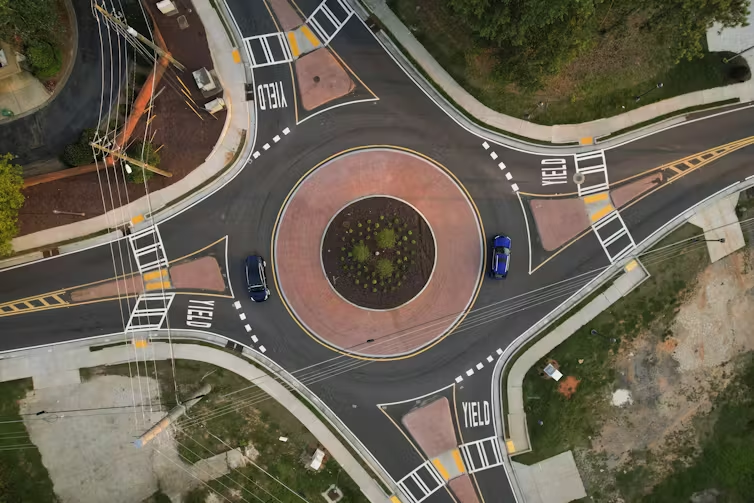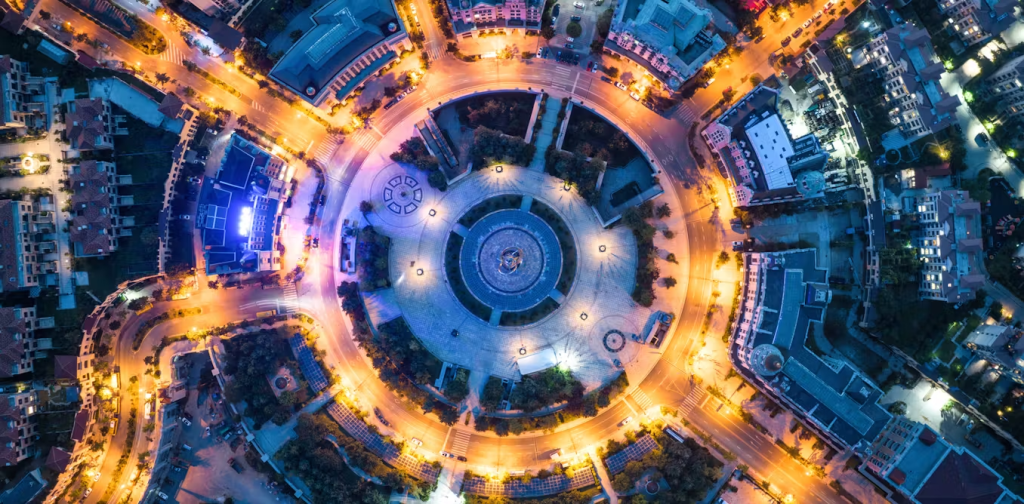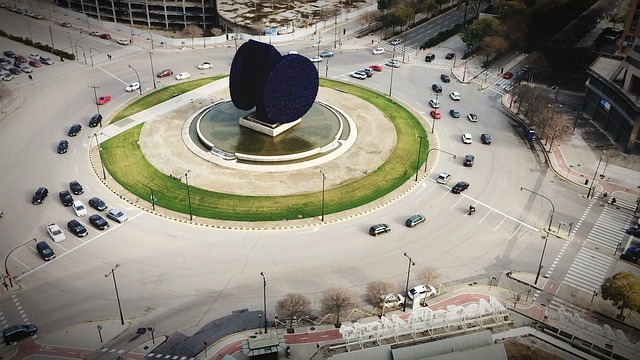Roundabouts are popping up all over the United States, and while some drivers love their efficiency, others approach them with uncertainty. These circular intersections, designed to improve safety and streamline traffic flow, are more than just a modern alternative to traditional intersections—they represent a shift toward smarter, safer roadways.
But why are roundabouts becoming so popular? Are they really safer than stoplights and four-way stops? Let’s dive into the history, benefits, and growing presence of roundabouts across the country.
What Are Roundabouts and How Do They Work?

A roundabout is a circular intersection where traffic moves counterclockwise around a central island. Unlike traditional intersections controlled by stop signs or traffic lights, roundabouts use a yield-at-entry system—vehicles entering must yield to those already inside.
This design eliminates direct crossing paths, which significantly reduces severe accidents. Instead of T-bone collisions or head-on crashes, roundabouts create a continuous flow of traffic with lower-speed merging.
Modern roundabouts often feature:
- Pedestrian crossings set back from the circle for safer walking
- Splitter islands (raised curbs) that slow vehicles before entry
- One or two lanes, depending on traffic volume
- Clear signage and lane markings to guide drivers
Because of these features, roundabouts improve safety while keeping traffic moving smoothly.
A Brief History of Roundabouts: From Europe to America
Roundabouts may seem like a new trend in the U.S., but their origins go back centuries. European cities like Bath, England, and Paris, France, had circular intersections as early as the 1700s. Washington, D.C., also incorporated traffic circles into its city design, but early American versions lacked modern safety features.
The breakthrough came in the 1950s when British engineers introduced yield-at-entry rules to prevent gridlock and accidents. This change made roundabouts far more efficient and safer than older versions.
Europe quickly adopted the modern roundabout, and by the 1990s, North America followed suit. The first modern American roundabout was built in Summerlin, Nevada, in 1990. Since then, roundabouts have exploded in popularity, with over 10,000 now in use across the U.S.
Why Are Roundabouts Safer Than Traditional Intersections?
One of the biggest reasons roundabouts are being widely adopted is their superior safety record compared to stop-controlled or signalized intersections.
Here’s how they reduce accidents:
- Fewer Conflict Points: A four-way intersection has 32 potential conflict points where vehicles can crash. A roundabout reduces this number to just 8 by eliminating left turns and crossing paths.
- Lower Speeds: Traditional intersections often involve high-speed crashes, especially when drivers run red lights. In a roundabout, speeds naturally stay between 15-25 mph, making accidents less severe.
- Fewer Fatalities: According to the Federal Highway Administration (FHWA), replacing a stop-controlled intersection with a roundabout reduces serious and fatal crashes by 90%. Even replacing traffic signals with roundabouts results in an 80% reduction in severe crashes.
The numbers don’t lie—roundabouts save lives by minimizing high-speed, high-impact collisions.
The Efficiency and Environmental Benefits of Roundabouts

Beyond safety, roundabouts also offer major advantages in traffic efficiency and environmental impact.
- Reduced Traffic Delays: Since cars don’t have to stop and wait for lights to change, they keep moving, reducing congestion.
- Lower Fuel Consumption: Less idling means better fuel efficiency, saving drivers money on gas.
- Fewer Emissions: With smoother traffic flow and less stopping and starting, roundabouts reduce carbon emissions, making them an eco-friendly choice for cities.
- Easier U-Turns: Need to reverse direction? Roundabouts make U-turns simple and safer compared to traditional intersections.
Where Are Roundabouts Most Common in the U.S.?
Roundabouts are most commonly found in areas with heavy traffic or high accident rates. Some states have embraced them more than others:
- Florida leads the way with over 750 roundabouts, using them as a key tool in traffic management.
- New York and Virginia have adopted a “roundabout first” policy, making them the default choice when designing new intersections.
- The Midwest and Mountain states have fewer roundabouts, mostly due to lower traffic volume and rural road conditions.
However, even in states with fewer roundabouts, their numbers are steadily increasing as more city planners recognize their benefits.
The Public’s Reaction to Roundabouts

Not everyone is immediately sold on roundabouts. In fact, public perception of them often starts off negative. Some common concerns include:
- Confusion: Drivers unfamiliar with roundabouts sometimes struggle with yielding and lane selection.
- Fear of Change: People who are used to stoplights may resist adapting to a new system.
- Merging Anxiety: Some drivers worry about safely entering a roundabout when traffic is busy.
However, studies show that after roundabouts are installed, public opinion dramatically shifts. Once drivers get used to them, they report:
- Smoother and faster traffic flow
- Less road rage and frustration
- Increased sense of safety
The key is driver education. When cities provide proper signage and guidance on how to use roundabouts, public approval increases.
The Future of Roundabouts in the United States

Roundabouts are here to stay. With their proven safety, efficiency, and environmental benefits, they are becoming the preferred intersection design for many states.
The number of roundabouts in the U.S. has skyrocketed from just 356 in 2000 to over 10,000 today, and that number continues to climb. More states are recognizing that roundabouts are:
- Cost-effective (requiring less maintenance than traffic signals)
- Safer for drivers, cyclists, and pedestrians
- Better for the environment
Federal and state transportation agencies are actively promoting roundabouts, meaning we’ll likely see thousands more installed in the coming years.
Conclusion: Roundabouts Are the Future of Safer, Smarter Roads
Roundabouts are more than just a traffic design trend—they represent a major step forward in road safety and efficiency. By reducing conflict points, encouraging continuous traffic flow, and lowering vehicle emissions, they solve many of the problems posed by traditional intersections.
While some drivers may feel hesitant about using them, the facts speak for themselves. Roundabouts save lives, reduce congestion, and make driving a smoother, more enjoyable experience.
So, the next time you approach a roundabout, embrace it! It’s not just a circle—it’s a smarter way to drive.


